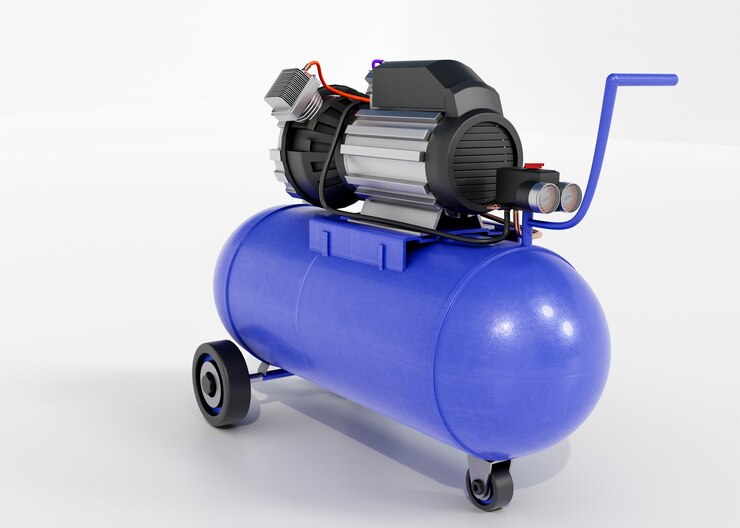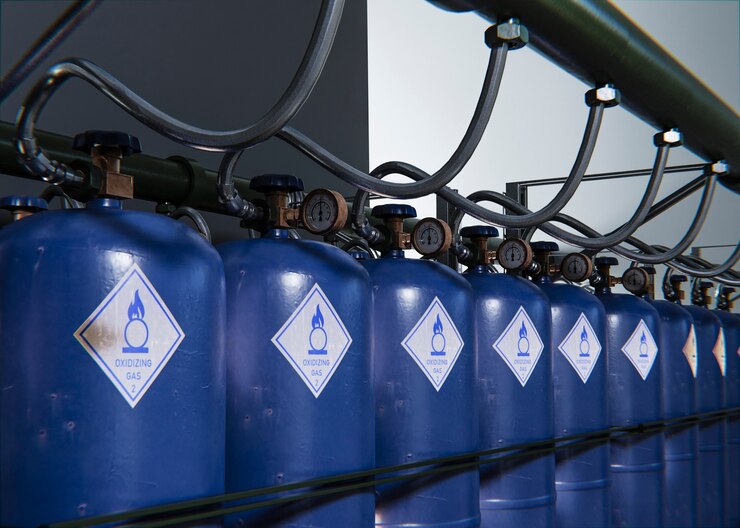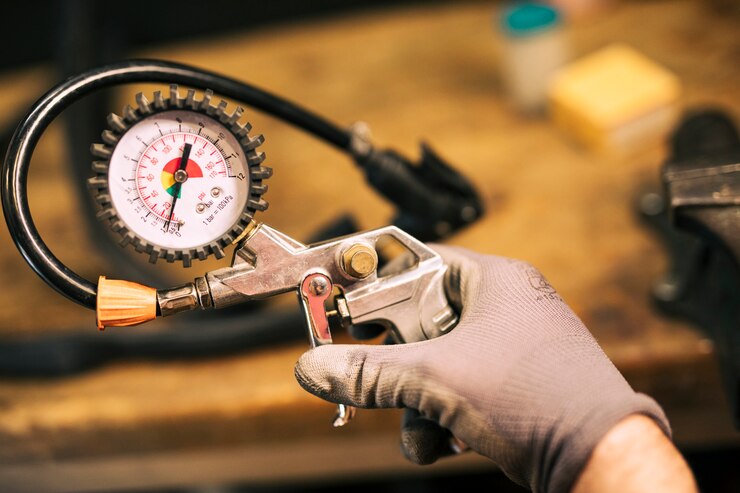Hydrogen Mix Screw Compressor: Complete Guide 2024
Hydrocarbon Mix Screw Compressor Used to Produce Compressed Hydrogen. Hydrogen is emerging as an environmental energy source. Cars driven by fuel cells can make use of it, residences generate electricity, and industrial use for all kinds of life that uses biological production lines as well. Unlike gasoline or natural gas, however, hydrogen requires compression to be moved from the tank or storage area to its point of use. This is where hydrogen compressors come in.
In the following article, we delve into this world of hydrogen compression technology and meet a major player in the field: the Hydrogen Mix Screw Compressor.
Squeezing Power Out of Hydrogen
Imagine squashing a balloon and its contents becoming heavier. That’s also the principle of how hydrogen compresses. Two main kinds of compressors have been used to do this job: Positive Displacement (PD) and dynamic compressors.
Positive Displacement (PD) compressors: These capture a discrete volume of hydrogen gas and push it into a smaller area to increase its pressure, expanding gas out with more force. It’s like using a syringe to blow air. PD compressors are good for fueling cars with hydrogen at medium pressures such as 350 bar.
Dynamic compressors: These use rotating blades to give energy to the hydrogen, pushing up its gas pressure. It is thus suitable for very high-pressure work but may well contaminate the clean hydrogen with foreign substances due to the mechanical devices required that produce turbulence in the gas stream.
Screw Compressors Explained
Hydrogen Mix Screw Compressors are so named because they belong to the positive displacement family of compressors. Here’s how they work:
Imagine two screws, one in a spiral shape and the other with matching grooves. These rotors mesh together as they turn, forming an uninterrupted chamber.
Hydrogen gas flows into this chamber and is trapped in the grooves. As the screws rotate, the space between them becomes smaller and smaller- The trapped gas is compressed and its pressure rises.
Screw compressors swallow the purging loss as they work to compress gases. This simple movement of the mechanism pulls in fresh air but also results in losses constituted by purged air and the amount of air made up by recirculation- often 1/4 through existing volume before compression as a rule.
Moreover, there are losses associated with temperature differences between discharged gas and suctioned gases at high-speed flow velocity across rotors surfaces — this is known as aerothermal shear stress which demands energy be expended out of proportion with what would show up under general thermodynamic trends.
There are different types of screw compressor rotors, each of which affects performance. But we’ll leave that for another day!
The Choices for Hydrogen Purity
Screw compressors are diverse in terms primarily due to variations in the oil lubrication system:
Oil-lubricated: These use oil for lubrication and cooling, and packing also requires oil. They are generally less expensive, but could bring oil contamination into hydrogen, which is a big no-no for some applications., Such as fuel supply in fuel cells.
Oil-free compressors: These provide for every instance they can process out one of the multiple factors necessary to achieve lubrication and packing with means such as water injection or special coatings, which can keep the hydrogen pure and make them suitable for several applications. However, they tend to be more expensive and slightly lower in efficiency than oil-lubricated options.
Challenges of Hydrogen Compression
However, although screw compressors are seen in many ways, they also present challenges:
How to maintain the high purity level of hydrogen: As mentioned earlier, some applications call for fully clean hydrogen. Even oily or inappropriate materials used inside the compressor may produce impurities in the compressed gas Oil-free compressors or special coatings can solve this problem.
Capacity and Pressure Matching: Different applications have different levels of pressure and flow screw compressors may not be the best choice for high pressure compared to other types in dynamic options.
Hydrogen Compression in the Clean Energy Era
Hydrogen compressors are expected to be in short supply in the future clean energy era. This is driven by the fact that fuel cell cars, clean energy infrastructure and other industrial contributions are beseechingly coordinated with increasingly widespread use as well as further research and development of hydrogen.
The good news is that the technology of screw compressors is continuously being upgraded. Researchers are now developing advanced models that are much more efficient and can deal with a broader span of practical conditions. This will make Hydrogen Mix Screw Compressors even more influential in the fascinating world of hydrogen energy.
Hydrogen Mix Screw Compressors Working
Next, we take a deeper look at Hydrogen Mix Screw Compressors and see how they get used in real-world situations.
Stage Number Two:
Hydrogen mixed with hydrocarbon impurity in screw compressors – sounds a bit like an oxymoron, doesn’t it? Here’s the scoop: Most screw compressors designed for handling hydrogen don’t simply compress pure hydrogen. They mix it with a trace amount of inert gases such as nitrogen, helium, etc.
Mixing gas can bring several benefits
Reduced self-ignition risk: Hydrogen ignites all too readily just from a small spark. Mixing it with an inert gas can diminish this danger.
Better cooling: The inert gas, acting as a coolant during compression, both reduces temperature and raises efficiency.
Please bear in mind that adding is not always necessary, and the specific application will determine whether it’s not needed.
What Industries Use Hydrogen Mix Scr ew Compressors
Now let’s take a look at the application of these compressors:
Fueling Stations: Hydrogen Mix Screw Compressors naturally are a good match for compressing hydrogen to be used as a fuel for vehicles. The pressure requirements here are usually medium-high, fitting them well into service. For the sake of fuel cell purity, oil-free compressors are commonly used.
Hydrogen Production: After hydrogen production processes such as electrolysis, the gas produced may be at low pressure. Hydrogen Mix Screw Compressors can raise that pressure for storage or transportation.
Chemical and Industrial Processes: Hydrogen is utilized in these applications by several industries. Screw compressors can be efficaciously employed to adjust the pressures of hydrogen as used in those applications, depending on the individual specifics.
Selecting the Right Hydrocarbon Mix Screw Compressor
Pressure and flow requirements: your semiconductor’s compressor must not only meet to reach a given pressure but also achieve the necessary mass flow rate.
Hydrogen purity needs: certain applications require highly pure hydrogen which mandates oil-free compressors at all times.
Cost and maintenance: while oil-free compressors may carry higher initial costs, now that they require less maintenance than oil-flooded options, their overall investment may ultimately prove lower.
Consulting with an air compressor specialist can help you choose the right Hydrogen Mix Screw Compressor for your needs.
Hydrocarbon Mix Screw Compressor Technology Fast Approaches
In the future, the hydrogen economy will grow and demand will soar for efficient and reliable compression solutions. Here’s a look at what lies ahead for Hydrogen Mix Screw Compressors:
Material updates: There’s work underway on developing new materials for better wear resistance and compatibility with hydrogen, aiming to increase lifespan while maintaining good performance.
Better efficiency: There are developments in rotor design and manufacturing techniques that seek to improve usually inadequate efficiencies for certain compressors, leading to lower energy consumption and costs alike.
Quantities New Designs: Also going forward for compressors are fresh designs that can accommodate a wider mass flow range, including a large but unspecified success because it takes into account parts of the driver rather than just one part.
Summary
Hydrocarbon Mix Screw Compressor play a major role in the clean energy future, the hydrogen mix screw compressor has introduced a new product that may well change this possibility. The products towards a clean energy future powered by hydrogen are quietly beginning.
The hydrogen mix screw compressor, relying on its high efficiency: unlike piston engines and accurately limited temperature water desalination that have moving parts worn out or requiring adjustment every few months achieves a wear life lasting several years without any need to be serviced at all, has the potential for substantial cost savings over time.
Read more: What is High Flow Screw Compressor? A-Z GUIDE 2024



